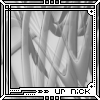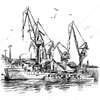 Реклама Google — средство выживания форумов :)
Реклама Google — средство выживания форумов :)
-
![[image]](https://www.balancer.ru/cache/sites/com/de/defensenews/intercepts/wp-content/uploads/2014/06/128x128-crop/Z0021-DSC_1485.jpg)
Эсминцы типа Zumwalt (USS DD-21/USS DD(X)/DDG-1000)
Теги:
LtRum> Я же объяснил - именно живучесть и повышается. А сейчас ГРЩ с кабелями поврежден - полкорабля обесточено...
Немного ранее
LtRum> ... перешли от традиционной системы распределения электроэнергии (Генераторы-ГРЩ-РЩ-потребители) к зональной системе с несколькими преобразованиями (Генераторы - ГРЩ - дублированные шины питания-преобразователи по отсекам-потребители в отсеке).
Получается, что если ГРЩ повреждён, от питания не будет совсем в обоих случаях.
Немного ранее
LtRum> ... перешли от традиционной системы распределения электроэнергии (Генераторы-ГРЩ-РЩ-потребители) к зональной системе с несколькими преобразованиями (Генераторы - ГРЩ - дублированные шины питания-преобразователи по отсекам-потребители в отсеке).
Получается, что если ГРЩ повреждён, от питания не будет совсем в обоих случаях.


Полл>> Не забудь, коли уж сравнивать взялся, массу средств разведки и целеуказания, управления и связи, чтобы обеспечить применение подобного огневого средства на его дальность.
TT> А для ракето-пушки они не нужны? Что ты несешь?
Свет правды.
В темное царство ваших тараканов.
Так какова масса необходимых средств для обеспечения такой стрельбы, оценка будет? Мне без разницы, для какой системы - ОТРК или сверхдальнобойная артиллерия.
TT> Что касается российских крылатых ракет, то ограничителем на сирийском ТВД было низкое количество носителей и пусковых установок.
На 4 кораблях Каспийской флотилии боекомплект - 32 ракеты.
Такого пуска ни разу не было произведено.
Кроме того, на одном Ту-95МС помещается 8 КР. То есть всего лишь 4 Ту-95МС - это еще 32 КР. То есть пуски по 30 КР для России на сегодня не представляют технической проблемы.
Но за все время Сирийской компании таких пусков ни разу не было, самый массовый пуск - 26 КР за раз. Остальные - по 2-6 штук.
TT> А для ракето-пушки они не нужны? Что ты несешь?
Свет правды.
В темное царство ваших тараканов.

Так какова масса необходимых средств для обеспечения такой стрельбы, оценка будет? Мне без разницы, для какой системы - ОТРК или сверхдальнобойная артиллерия.
TT> Что касается российских крылатых ракет, то ограничителем на сирийском ТВД было низкое количество носителей и пусковых установок.
На 4 кораблях Каспийской флотилии боекомплект - 32 ракеты.
Такого пуска ни разу не было произведено.
Кроме того, на одном Ту-95МС помещается 8 КР. То есть всего лишь 4 Ту-95МС - это еще 32 КР. То есть пуски по 30 КР для России на сегодня не представляют технической проблемы.
Но за все время Сирийской компании таких пусков ни разу не было, самый массовый пуск - 26 КР за раз. Остальные - по 2-6 штук.


TT> А теперь массу орудия, массу автоматики и прочую подпалубную лабуду добавляем. Для ракет было бы достаточно вертикальных шахт.
На 900 ракет?! - Для них так-же придётся городить "лабуду". И суммарная масса этой лабуды и ракет, при том что каждая ракета будет в два с лишним раза тяжелее снаряда, даст скорее проигрыш по массо-габаритам.
TT> Сравнение с Гермесом некорректное...
Да, у него дальность меньше, почти в два раза, и масса БЧ, аналогично. Можно сравнить с ракетами дальнобойных РСЗО.
TT> ... Корабль при использовании своей артиллерии находится на дальности эффективного применения ПКР...
Так это цель номер один, и не только для снарядов.
С учётом стелсовости и наличия ПРО - можно не бегать.
На 900 ракет?! - Для них так-же придётся городить "лабуду". И суммарная масса этой лабуды и ракет, при том что каждая ракета будет в два с лишним раза тяжелее снаряда, даст скорее проигрыш по массо-габаритам.
TT> Сравнение с Гермесом некорректное...
Да, у него дальность меньше, почти в два раза, и масса БЧ, аналогично. Можно сравнить с ракетами дальнобойных РСЗО.
TT> ... Корабль при использовании своей артиллерии находится на дальности эффективного применения ПКР...
Так это цель номер один, и не только для снарядов.
С учётом стелсовости и наличия ПРО - можно не бегать.


hsm> На 900 ракет?! - Для них так-же придётся городить "лабуду". И суммарная масса этой лабуды и ракет, при том что каждая ракета будет в два с лишним раза тяжелее снаряда, даст скорее проигрыш по массо-габаритам.
Зато можно быстро отстреляться и уйти. Суммарная масса будет не больше, зато скорострельность выше. Для достижения дальности 148 км пришлось удлинить ракетную часть активно-реактивного снаряда Зумволта и поэтому он не помещается целиком в люльку артиллерийского затвора. Орудие Зумволта для перезаряжания должно занять каждый раз вертикальную позицию. Представили зрелище? Очевидно что сами американцы не считают концепцию корабля подходящей их ВМФ, если в планах всего три корабля.
hsm> Да, у него дальность меньше, почти в два раза, и масса БЧ, аналогично. Можно сравнить с ракетами дальнобойных РСЗО.
Это не ракеты для сравнения, правильная ракета и полетит дальше чем ракето-снаряд и весить будет немногим больше и нормальную ГСН можно впендюрить. И разместить их можно в два яруса под палубой.
hsm> С учётом стелсовости и наличия ПРО - можно не бегать.
Стелсовость хороша в открытом океане, а не у берега противника, когда ракеты по кораблю полетят десятками в одном залпе. Корабль не самолет, не спрятаться.
Зато можно быстро отстреляться и уйти. Суммарная масса будет не больше, зато скорострельность выше. Для достижения дальности 148 км пришлось удлинить ракетную часть активно-реактивного снаряда Зумволта и поэтому он не помещается целиком в люльку артиллерийского затвора. Орудие Зумволта для перезаряжания должно занять каждый раз вертикальную позицию. Представили зрелище? Очевидно что сами американцы не считают концепцию корабля подходящей их ВМФ, если в планах всего три корабля.
hsm> Да, у него дальность меньше, почти в два раза, и масса БЧ, аналогично. Можно сравнить с ракетами дальнобойных РСЗО.
Это не ракеты для сравнения, правильная ракета и полетит дальше чем ракето-снаряд и весить будет немногим больше и нормальную ГСН можно впендюрить. И разместить их можно в два яруса под палубой.
hsm> С учётом стелсовости и наличия ПРО - можно не бегать.
Стелсовость хороша в открытом океане, а не у берега противника, когда ракеты по кораблю полетят десятками в одном залпе. Корабль не самолет, не спрятаться.


Это сообщение редактировалось 19.01.2018 в 19:35
Полл> Но за все время Сирийской компании таких пусков ни разу не было, самый массовый пуск - 26 КР за раз. Остальные - по 2-6 штук.
Ну так нужды не было, по сараям и кибиткам бармалеев расточительно такими ракетами стрелять. Ни целей ни целесообразности применения таких ракет не было, можно говорить о продолжении полевых испытаний и использовании ракет с истекшими сроками гарантийного хранения.
Ну так нужды не было, по сараям и кибиткам бармалеев расточительно такими ракетами стрелять. Ни целей ни целесообразности применения таких ракет не было, можно говорить о продолжении полевых испытаний и использовании ракет с истекшими сроками гарантийного хранения.


hsm> А у 155 мм LRLAP примерно 50 кг БЧ, и дальность 180 км
180км (100 мм) - это были рекламные обещания. А всуровой действительности тестах было показано не более 117-137 км (63-74 м.мили):
a) 63 NM was the ORD threshold requirement and was demonstrated with GF-6 some time in 2008.
b) 74 NM was the predicted maximum range based on flight test data.

180км (100 мм) - это были рекламные обещания. А в
a) 63 NM was the ORD threshold requirement and was demonstrated with GF-6 some time in 2008.
b) 74 NM was the predicted maximum range based on flight test data.

Ze Scott Brim Gun Gadgetry Galore Thread (ZSBGGG) - Page 51 - NavWeaps Discussion Boards
LRLAP once planned to have an upgrade with its guidance system for ASuW mission? This is the first time I have heard about this. Do u have the paper f // www.tapatalk.com

Это сообщение редактировалось 19.01.2018 в 21:44
hsm> На данный момент США располагают богатым парком средств разведки, способных дать адекватное целеуказание для применения LRLAP.
Война в Ираке и Сирии не подтверждает достаточность этих средств.
hsm> ...Ответ прост - отсутсвие снаряда требуемой дальности и точности.
И мощности
Война в Ираке и Сирии не подтверждает достаточность этих средств.
hsm> ...Ответ прост - отсутсвие снаряда требуемой дальности и точности.
И мощности



Снаряд LRLAP - Long Range Land Attack Projectile , однако не совсем понятно каких именно наземных целей он должен был поражать. Наведение по GPS (очевидно по стационарным целям), но обычные 155мм ОФ снаряды (поражающие свойства которых аналогичны LRLAP) предназначены для массированного обстрела сухопутных целей (в основном площадных).
Но амеры уже испытывают систему GLSDB - Ground Launched Small Diameter Bomb. Сущность в том что бы использовать ракет РСЗО М26 как носители SDB (ракета М26 близкий аналог снарядов Урагана РСЗО, вес 300 кг , длина 4 м, калибр 227мм). Максимальная дальность получается 150км. Напоминаем что GBU-39 Small Diameter Bomb (SDB) имеет вес 130кг, вес БЧ 93кг и стоит 40К$, наведение GPS. Сама ракета М26 врят ли стоит дорого если учесть что ее российский аналог - например агитационный 220 мм реактивный снаряд 9М27Д стоил в 2005г. ~ 60К рублей , боевые ~ 300К рублей. Таким образом возможно иметь высокоточную ракетную систему с весом БЧ 93кг и дальности 150км и стоимости менее 100К$ (возможно ~ 50-60К$).
Но это еще не все, чисто балистичную ракету (в том числе высокоточную) с недорогим РДТТ для достижения дальностей 150км можно сделать при соотношении веса ракеты к БЧ ~ 6:1 (в данной весовой категории), тоесть в ракетой весом 300кг можно впихнуть 50кг БЧ (стартовый вес 300кг). Стоимость опять таки будет ~ 50K$.
Стоимость LRLAP как уже известно приблизилась к 1 млн. $ .
Но амеры уже испытывают систему GLSDB - Ground Launched Small Diameter Bomb. Сущность в том что бы использовать ракет РСЗО М26 как носители SDB (ракета М26 близкий аналог снарядов Урагана РСЗО, вес 300 кг , длина 4 м, калибр 227мм). Максимальная дальность получается 150км. Напоминаем что GBU-39 Small Diameter Bomb (SDB) имеет вес 130кг, вес БЧ 93кг и стоит 40К$, наведение GPS. Сама ракета М26 врят ли стоит дорого если учесть что ее российский аналог - например агитационный 220 мм реактивный снаряд 9М27Д стоил в 2005г. ~ 60К рублей , боевые ~ 300К рублей. Таким образом возможно иметь высокоточную ракетную систему с весом БЧ 93кг и дальности 150км и стоимости менее 100К$ (возможно ~ 50-60К$).
Но это еще не все, чисто балистичную ракету (в том числе высокоточную) с недорогим РДТТ для достижения дальностей 150км можно сделать при соотношении веса ракеты к БЧ ~ 6:1 (в данной весовой категории), тоесть в ракетой весом 300кг можно впихнуть 50кг БЧ (стартовый вес 300кг). Стоимость опять таки будет ~ 50K$.
Стоимость LRLAP как уже известно приблизилась к 1 млн. $ .


Lunar>> ... На большие дальности надо что-то типа Точки из ВПУ. Или с наклонной ПУ и пулять MGM-140 ATACMS.
hsm> Есть классы целей (и их большинство) для которых достаточно снаряда (или нескольких снарядов). Использовать против них Точки/ATACMS-ы - бросать деньги на ветер.
Большинству классов целей достаточно горло кухонным ножиком перерезать. Однако нормой стало бросать JDAM.
Сейчас реалии таковы что для не контролируемой американскими сухопутчиками территории, Зумвальту надо будет совершить ночной рейд до рубежа в 30км до берега, запустить беспилотник для доразведки по мягким целям на глубину 50км от берега, обстрелять их суперснарядами, спасти беспилотник и свалить. В общем дороговато получается.
По неподвижной жесткой цели амеры и томагавка не пожалеют. А вообще в противобармалейской войне Зумвальт вчистую слил предатору. Зумвальт задумывался против надводной войны с советским флотом в разряженных порядках. Против земли он может использоваться только как корабль-ракетный арсенал. По факту даже для этого он чрезмерно дорогой и не имеет реальной боеготовности. Раскорячит его возле сомали и бармалеи его потопят из РПГ.
hsm> Есть классы целей (и их большинство) для которых достаточно снаряда (или нескольких снарядов). Использовать против них Точки/ATACMS-ы - бросать деньги на ветер.
Большинству классов целей достаточно горло кухонным ножиком перерезать. Однако нормой стало бросать JDAM.
Сейчас реалии таковы что для не контролируемой американскими сухопутчиками территории, Зумвальту надо будет совершить ночной рейд до рубежа в 30км до берега, запустить беспилотник для доразведки по мягким целям на глубину 50км от берега, обстрелять их суперснарядами, спасти беспилотник и свалить. В общем дороговато получается.
По неподвижной жесткой цели амеры и томагавка не пожалеют. А вообще в противобармалейской войне Зумвальт вчистую слил предатору. Зумвальт задумывался против надводной войны с советским флотом в разряженных порядках. Против земли он может использоваться только как корабль-ракетный арсенал. По факту даже для этого он чрезмерно дорогой и не имеет реальной боеготовности. Раскорячит его возле сомали и бармалеи его потопят из РПГ.


Lunar> Сейчас реалии таковы что для не контролируемой американскими сухопутчиками территории, Зумвальту надо будет совершить ночной рейд до рубежа в 30км до берега
Они Берки-то боязливо подпускают, да и то только потому что с LCS плохо получилось.
Они Берки-то боязливо подпускают, да и то только потому что с LCS плохо получилось.


Lunar> Зумвальт задумывался против надводной войны с советским флотом в разряженных порядках.
Это ерунда. Программа DDX началась когда СССР уже не было.
DDX задумывался как средство поддержки загоризонтной высадки, когда находясь на расстоянии 20-30 миль от берега нужно подавлять вскрывшиеся цели в нескольких пунктах высадки, включая не только на урезе воды, но и недалеко от берега - поддержка высадки с вертолетов.
Это ерунда. Программа DDX началась когда СССР уже не было.
DDX задумывался как средство поддержки загоризонтной высадки, когда находясь на расстоянии 20-30 миль от берега нужно подавлять вскрывшиеся цели в нескольких пунктах высадки, включая не только на урезе воды, но и недалеко от берега - поддержка высадки с вертолетов.


LtRum> DDX задумывался как средство поддержки загоризонтной высадки, когда находясь на расстоянии 20-30 миль от берега нужно подавлять вскрывшиеся цели в нескольких пунктах высадки, включая не только на урезе воды, но и недалеко от берега - поддержка высадки с вертолетов.
Не верю. Это порождение начала 80тых. Тогда такой мелочью не занимались и то что они с корабля такого класса будут воевать с душманами, в страшном сне придумать не могли.
Даже вот вики-цитатка
Не верю. Это порождение начала 80тых. Тогда такой мелочью не занимались и то что они с корабля такого класса будут воевать с душманами, в страшном сне придумать не могли.
Даже вот вики-цитатка
The origins of SC-21 lie in the realization by Admiral Joseph Metcalf III that new technologies such as vertical launch missiles permitted a complete rethink of warship design. He established a steering group, Group Mike, to study the possibilities.[1] Group Mike sponsored two studies in 1987: the Ship Operational Characteristics Study (SOCS) and the Surface Combatant Force Requirement Study (SCFRS).[1] Respectively, these studies sought to identify the operational characteristics required of an escort ship and estimate how many such ships were required by the fleet.[1] Since it was expected at that time that the Navy would be fighting prolonged campaigns in the Norwegian Sea, SOCS put an emphasis on ships' continuing ability to fight after an initial Soviet attack.[1] This in turn called for larger, more survivable escort ships than had historically been the norm, around 12,000 tons, and for networking sensors and weapons together so that they could be used by the task force as a whole even if an individual ship had their radar disabled.[1] Survivability also called for the bridge and Combat Information Center to be combined and "buried" in the heart of the ship, and for the ship to use electric drive to distribute the engineering around the ship. This would provide more room for weapons as well as the scope for future weapons such as railguns and lasers.[1] SCFRS suggested that the Navy should not replace the Perry class frigate for convoy escort duties, but concentrate on building front-line combatants that could be assigned to less demanding convoy duties in their later years.[1]


LtRum>> DDX задумывался как средство поддержки загоризонтной высадки, когда находясь на расстоянии 20-30 миль от берега
Полл> При дальности стрельбы более 200 морских миль можно было держаться от берега и далее.
Пункт высадки не один, и может располагаться в глубине территории, маневрирование в общем случае производится не напротив. В сумме и набегает 100-150км.
И насколько я помню дальность стрельбы все же 180 км, а не морских миль.
Полл> При дальности стрельбы более 200 морских миль можно было держаться от берега и далее.
Пункт высадки не один, и может располагаться в глубине территории, маневрирование в общем случае производится не напротив. В сумме и набегает 100-150км.
И насколько я помню дальность стрельбы все же 180 км, а не морских миль.


LtRum>>> DDX задумывался как средство поддержки загоризонтной высадки, когда находясь на расстоянии 20-30 миль от берега
Полл>> При дальности стрельбы более 200 морских миль можно было держаться от берега и далее.
LtRum> Пункт высадки не один, и может располагаться в глубине территории, маневрирование в общем случае производится не напротив. В сумме и набегает 100-150км.
LtRum> И насколько я помню дальность стрельбы все же 180 км, а не морских миль.
Хотя в вашу пользу мнение globalsecurity.org
Но я думаю что эта тема еще ждет своего исследователя.
Полл>> При дальности стрельбы более 200 морских миль можно было держаться от берега и далее.
LtRum> Пункт высадки не один, и может располагаться в глубине территории, маневрирование в общем случае производится не напротив. В сумме и набегает 100-150км.
LtRum> И насколько я помню дальность стрельбы все же 180 км, а не морских миль.
Хотя в вашу пользу мнение globalsecurity.org
DD 21 was to be a multimission destroyer tailored for land attack warfare. DD 21 was required to support ground forces as a primary mission, in addition to performing traditional destroyer missions (i.e., anti-air, anti-surface, and undersea warfare). In that regard, DD 21 represented a departure from past design efforts, which were focused primarily on the deep-water threats of the Cold War era. The DD 21 was to be a true fleet destroyer, capable of handling any mission that a Fleet commander might ask, from key wartime missions in land attack and undersea warfare to the equally important presence missions, noncombatant evacuations, escort, and diplomatic missions that have been closely associated with Navy destroyers for almost a century.
Но я думаю что эта тема еще ждет своего исследователя.


Lunar> Не верю. Это порождение начала 80тых.
SC-21 начался в 92 г.
Lunar> Тогда такой мелочью не занимались и то что они с корабля такого класса будут воевать с душманами, в страшном сне придумать не могли.
Да причем здесь душманы - он должен был прикрывать полноценную высадку с ARG - это бригада - две, какие нахрен душманы?
Как только необходимость производиться такие масштабные высадки исчезла - исчезла и необходимость в DDX-е.
SC-21 начался в 92 г.
Lunar> Тогда такой мелочью не занимались и то что они с корабля такого класса будут воевать с душманами, в страшном сне придумать не могли.
Да причем здесь душманы - он должен был прикрывать полноценную высадку с ARG - это бригада - две, какие нахрен душманы?
Как только необходимость производиться такие масштабные высадки исчезла - исчезла и необходимость в DDX-е.


Lunar>> Не верю. Это порождение начала 80тых.
LtRum> SC-21 начался в 92 г.
Lunar>> Тогда такой мелочью не занимались и то что они с корабля такого класса будут воевать с душманами, в страшном сне придумать не могли.
LtRum> Да причем здесь душманы - он должен был прикрывать полноценную высадку с ARG - это бригада - две, какие нахрен душманы?
LtRum> Как только необходимость производиться такие масштабные высадки исчезла - исчезла и необходимость в DDX-е.
Прикрывать - непонятный термин. Что он должен был конкретно делать?
Советы напали на мирную Норвегию аккурат в параллельном 95 году в силу своей звериной сущности.
Вот идет 15 день войны. Одна советская бригада в Нарвике, одна в Тромсе. Один ИАП на Су-27 в Тромсе, один в Бардуфосс.
Вот эльфы собрали ДЕСО, транспорты всякие, авианосец-другой, DD21 - штучки четыре и приплыли. И находятся от Лофотен милях в трехстах. Какова роль в этом великолепии DD21?
LtRum> SC-21 начался в 92 г.
Lunar>> Тогда такой мелочью не занимались и то что они с корабля такого класса будут воевать с душманами, в страшном сне придумать не могли.
LtRum> Да причем здесь душманы - он должен был прикрывать полноценную высадку с ARG - это бригада - две, какие нахрен душманы?
LtRum> Как только необходимость производиться такие масштабные высадки исчезла - исчезла и необходимость в DDX-е.
Прикрывать - непонятный термин. Что он должен был конкретно делать?
Советы напали на мирную Норвегию аккурат в параллельном 95 году в силу своей звериной сущности.
Вот идет 15 день войны. Одна советская бригада в Нарвике, одна в Тромсе. Один ИАП на Су-27 в Тромсе, один в Бардуфосс.
Вот эльфы собрали ДЕСО, транспорты всякие, авианосец-другой, DD21 - штучки четыре и приплыли. И находятся от Лофотен милях в трехстах. Какова роль в этом великолепии DD21?


Lunar> Прикрывать - непонятный термин. Что он должен был конкретно делать?
Виноват - правильный: оказывать огневую поддержку, т.е. по подавление и уничтожение вновь выявленных целей по запросу МП с передовой.
Lunar> Советы напали на мирную Норвегию аккурат в параллельном 95 году в силу своей звериной сущности.

Lunar> Вот эльфы собрали ДЕСО, транспорты всякие, авианосец-другой, DD21 - штучки четыре и приплыли. И находятся от Лофотен милях в трехстах. Какова роль в этом великолепии DD21?
Пока никакая. Его роль должна была возникнуть когда МП высаживаются на берег.
Виноват - правильный: оказывать огневую поддержку, т.е. по подавление и уничтожение вновь выявленных целей по запросу МП с передовой.
Lunar> Советы напали на мирную Норвегию аккурат в параллельном 95 году в силу своей звериной сущности.

Lunar> Вот эльфы собрали ДЕСО, транспорты всякие, авианосец-другой, DD21 - штучки четыре и приплыли. И находятся от Лофотен милях в трехстах. Какова роль в этом великолепии DD21?
Пока никакая. Его роль должна была возникнуть когда МП высаживаются на берег.


 Реклама Google — средство выживания форумов :)
Реклама Google — средство выживания форумов :)
Скорее всего роль Zumwalt ...... это попил бабла множество поставщиков хай-тек оборудования, кораблестроителей и пр. Влиятельные круги артиллеристов хотели все же поставить хай-тек орудии, Рейтеон поставил ППМ АФАР по завышенным ценам и т.д. и т.пр. В конечном итоге однако слишкой плохой менеджмент проекта дал большой сбой и результат очевиден.
Все конечно сугубо ИМХО.
Все конечно сугубо ИМХО.



Copyright © Balancer 1997..2024
Создано 05.06.2011
Связь с владельцами и администрацией сайта: anonisimov@gmail.com, rwasp1957@yandex.ru и admin@balancer.ru.
Создано 05.06.2011
Связь с владельцами и администрацией сайта: anonisimov@gmail.com, rwasp1957@yandex.ru и admin@balancer.ru.
 Dmb_2007
Dmb_2007

 инфо
инфо инструменты
инструменты



 TT
TT

 bearus
bearus

 intoxicated
intoxicated

 Shoehanger
Shoehanger



